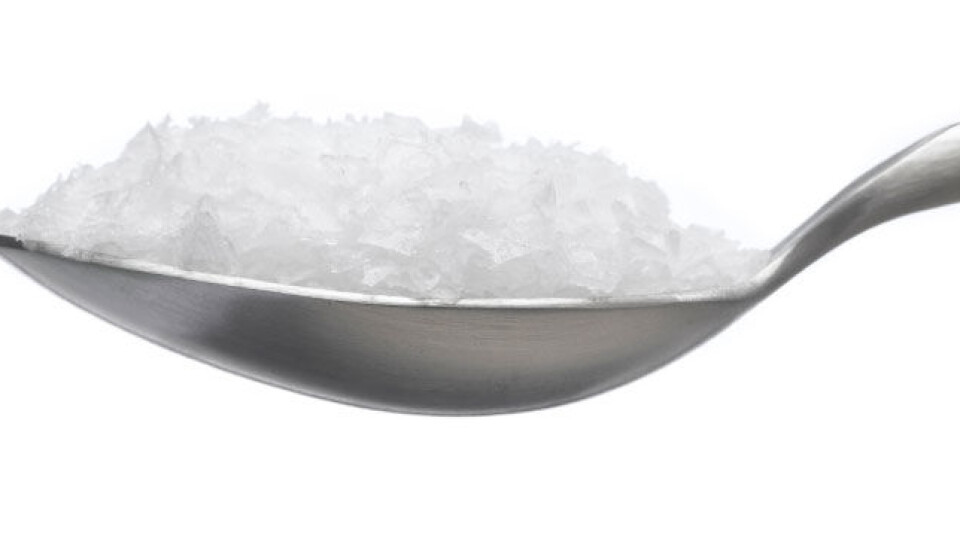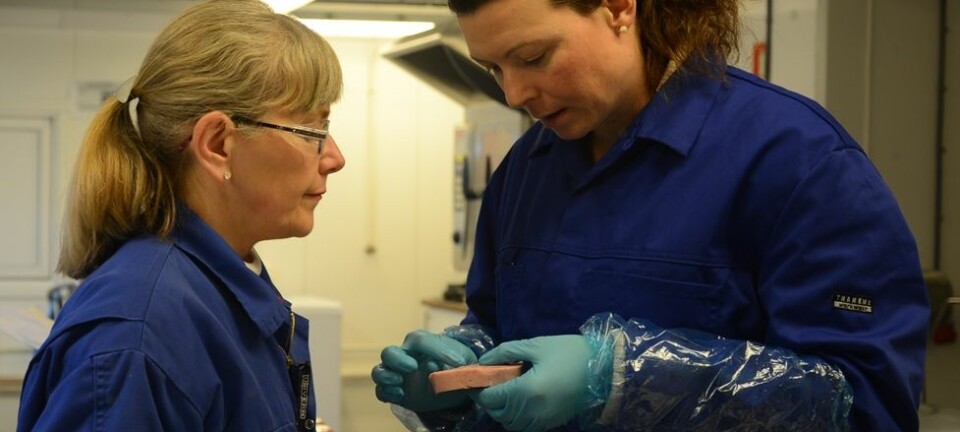
Salt is worse than tobacco
If we start consuming less salt we can save more lives than if we quit smoking, according to a Danish researcher. Three grams less salt per day per person can save about a thousand Norwegian lives and hundreds of millions of dollars a year.
Denne artikkelen er over ti år gammel og kan inneholde utdatert informasjon.
Sodium chloride is – well – the salt of life. We would die without it. But too much salt is really harmful. Senior Researcher Ulla Toft at the Research Centre for Prevention and Health in Copenhagen thinks we err on the side of salinity.
Toft was a speaker at the recent MeetEat conference in Oslo and lectured the meatpacking industry on salt from a health perspective.
“Our ancestors ate less than one gram of salt per day,” says Toft.
She says that one-and-a-half grams of salt daily is sufficient. We now consume around ten grams. Health authorities in Norway advise women to reduce that to six grams by 2018 – men are urged to limit themselves to seven grams. Once that is achieved, the next Norwegian goal will be to decrease intake to five grams a day.
High blood pressure

Hypertension and the corresponding risk of cardiovascular diseases are the most dangerous consequences of too much salt. High blood pressure is responsible for 50 percent of all cases of angina and heart attacks, and 60 percent of all strokes.
“We have a convincing cause-and-effect relationship between high salt intake and cardiovascular diseases,” says Toft.
She points to stomach cancer, osteoporosis and kidney stones – and perhaps also obesity and diabetes – as other consequences of our overconsumption of salt.
Saving 900 lives
Toft has calculated what Denmark can save if the average daily salt consumption were lowered by three grams – which is also the reduction that nutritionists want to see in Norway.
“Every year we can expect 400,000 fewer incidences of elevated blood pressure, 1,100 to 1,800 fewer cases of cardiovascular diseases, 600 to 1,000 fewer strokes and at least 1,000 fewer deaths,” she says.
Denmark has a population of 5.6 million – Norway has 5 million. Danes tend to consume about the same amount of salt as Norwegians. Transferring these estimates, Norway could expect around 900 fewer deaths a year if salt intake dropped by three grams a day. It would also save the country hundreds of millions of dollars in health costs.
In fact, reducting salt intake can be a better and cheaper form of life insurance than cutting down on smoking. Toft points to figures which show that a 15 percent cut in salt intake prevents three times as many deaths from cardiovascular disease as does a 20 percent cut in smoking.
These numbers were crunched in a study of 23 countries with medium and low incomes per capita, and possibly other levels of tobacco and salt consumption than in Scandinavia. So they cannot be directly transferred to prospective health gains in Norway. But the trend is clear.
Consumers wish to cut down
Norwegian consumers do want to reduce their salt consumption, according to Lars Johansson of the Norwegian Directorate of Health. International initiatives are underway – WHO, the EU and the Nordic Council of Ministers are working to lower our salt intakes.
Slightly over half of the salt in Norwegian foods is found in meat and grain products. That can be reduced. For instance, the salt content of bread has been cut 50 percent from 1984 to today.
In Great Britain, where media focus and consumer awareness regarding salt started several years before it did in Norway, studies have shown that consumers have noticed no change in the taste of foods as salt content has been gradually reduced. Low-salt foods sell just as well as other products.
Alternatives to sodium chloride
Alternatives to the salt we now have in foods are available. But that requires producers to understand their products, asserts doctoral student Kirsti Greiff at the independent Norwegian research organisation Sintef.
“There are all kinds of possibilities. But it comes down to what role salt plays in a product. If it’s just a matter of taste, for instance, yeast extracts can be added. But if the functional properties of salt are involved, if it is used as a water binding agent, for example, another type of salt has to be added, such as potassium chloride.”
“If microbiological issues are at stake – if the salt is preventing bacteria from multiplying – lactates or other ingredients would have to be used as substitutes. If we take away something that hampers bacteria we need to ensure that something else does the job,” she says.
Greiff wants the food industry to start reducing salt content whenever possible, without adding anything at all.
“Certain products have a relatively high concentration. Producers can try reducing the salt in different products and see how people react. But we need to do more than just reduce the salt if we want to achieve the goals set by health authorities. We have to add substitutes.”
The salt you have in a shaker on your table is not the big problem. Table salt sprinkled on your plate is only a small share of your total consumption. And it is effective - it provides a rapid change in taste, because it is on the surface and hits your tongue immediately, unlike much of the salt that is blended into the product.
“The sodium reduction we really need to see is in industrially produced foods,” says Greiff.
-----------------------
Read the Norwegian version of this article at forskning.no
Translated by: Glenn Ostling

































